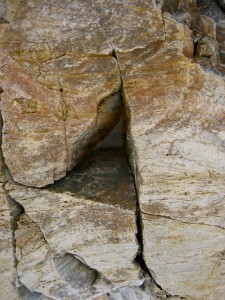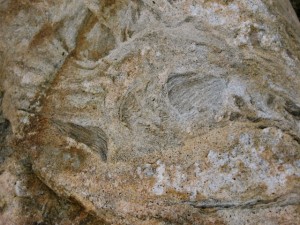
I am with a person who is angry, her anger like a brittle encrusted shell. I note how grumpy she is, having overslept, and now she is angry at the world. Nothing is right. In everyone there is something to criticize. In every situation there is something to be angry about. In every idea there is something to condescend to. Every attempt to be positive is negatively dismissed.
During my time with her, I wonder if I should say something, as her anger becomes increasingly uncomfortable to those around her. The Buddhists say that one should not interfere with another’s process in life, that everything they encounter is necessary for them to encounter, even if one sees the foreshadowing of great difficulty or even death. It is not right to alter another’s path. I also know that we cannot tell another what is so clear to us, for they will not get it until they are ready and, as the Buddhists point out, this may take many lifetimes. I encountered my own states of anger, denial, and unawareness, during my recapitulation, as I wondered over and over again why I had never been able before to understand my own psyche and what it was trying to tell me. It was only then that I understood what it means to be ready to face ourselves and our deeper issues. And so I elect to study this angry woman instead of saying anything to her.
I see how she holds her anger back, keeps it under her hard shell, but there comes a point when she just can’t retain it any longer. Suddenly, she lets loose a barrage of angry words, stunningly harsh and mean, directed at a person whom has asked a simple caring question. Again, I want to point out to this angry woman that she is being inappropriate, that she is hurting the other person, yet I hold back, for I know that my pointing out her mood will have no effect, and may perhaps incite yet more anger. I also know that there is something to be learned in such a situation, for all involved.
As I observe this angry woman, it becomes very clear that her anger has nothing to do with the person she spews it at, but that it has only to do with what is brewing and stewing inside her. Projection is clearly illustrated here. This woman woke up angry. Perhaps she went to bed angry too. Perhaps she has always been angry. But what is so clear to me, as I observe her, is that she is blaming people and situations outside of her. They are making her angry! She even says this to me later: how angry such people make her, how angry such ideas make her, how angry certain platitudes make her.

Later, as I ponder my time with this woman, as I again feel her anger boiling inside her, I wonder how long she will allow herself to be controlled by this fire within. For I saw how it consumed her, as she was unable to enjoy a moment of reality. Encased in it, everything just made her angrier. She fed this fire within constantly, giving it enough fuel to last a long time, and yet she confessed to me how tired she was.
It was clear that she desperately needed something to shift her out of this fire zone that she had parked herself in, yet I knew I could offer nothing. I am sure she was receiving many signs that might help in that shift, yet so consumed by the flames was she that she could not see. She could not see offers of kindness, she could not hear words of concern, she could not accept gentleness. Nothing that was offered was going to change how she interpreted the world, or how she projected her inadequacies onto the world, and the people she encountered there. Until she was ready…
She has to be ready to withdraw her projections from the world and face the angry fires within, and find out why she is being consumed in this manner. She has to ask herself why she is so angry all the time, why so rude and condescending, why so unhappy. Just as we all must do, at some point in our earthly existence, she too has to ask herself when she is going to stop blaming everyone else for her misery and face the reasons for it within. When she is ready…
And so, I too, must ask myself to find that angry woman inside myself and find out what she has to tell me. I do a little inner work around this angry woman as I go about the rest of my day. I find that my angry inner woman is pretty well known at this point. I’ve dealt with her many times over the years, dismantled her bonfires over and over again, put out the flames, and taken her aside to have a chat. I could only do that when I was ready, when I no longer wanted to be ruled by her, when I no longer wanted the world to be a place of fear and misery. And when I was finally ready to take back my projections, the world did change.
And so yesterday, as I did my angry woman inner work, I discovered that she has softened to a mere inkling of her old self. She carries very little fuel these days, for she has learned over the years of deep inner work that anger is nothing, that it only exists when fueled. Instead, I have learned to face the fires of anger as they flare up and question them on a deeply personal level. Is this anger justified? Does it help me? Is it worthwhile, does it help my evolution as a spiritual being? Is anger ever appropriate?
In the past I have used anger, a good friend to me at one time. It often helped to shift out of a bad situation, as I would get angry at myself for staying stuck. And so I can truly say that anger can be useful, but only if utilized on the self in a positive fashion, not to remain stuck in blame, but to catapult to a new place along the path of life. If directed outwardly, in projection, as the angry woman in my encounter used it, it does nothing positive, for anger burns up good energy, keeps the focus on blaming others rather than asking the self to be a fully responsible evolutionary being.
What I finally found out about myself yesterday, as I faced that old angry woman inside me, now shrunk to the size of a teeny tiny specimen of her old self, was that she has very little to complain about these days. In fact, I turned to her and told her that I didn’t need her anymore at all, that I only want to live and embrace the life that she held me back from fully living and enjoying for so long.

As I took back my projections and used my energy to learn how to live the life I had decided could never happen—because I was too angry at the world to engage it—I changed, life changed, the world outside of me changed, inner and outer reality changed. Now my energy is my own, and freed of old issues, such as anger, that energy just wants to live! I am no longer willing to be held back. This is what I encourage my children and those closest to me: Don’t let your fears or your anger hold you back. You are alive now and there is so much to explore and experience. Find out who you are and don’t ever hold that true self back. Live!
I see anger rising across America, falsely taking its place in the minds of so many. As we go into the next month of preparation for big changes in our country, and the world, perhaps we should all look within and find out what makes us so angry without. In so using our anger and our energy differently, we may impact the results of the election.
As the Buddhists say, all energy is interconnected and every decision we make about how we use our energy affects everything and everyone else around us. If our energy is directed at changing ourselves, we change our reality—our personal present life and that of our world. I did it—in recapitulating my childhood—and it worked and continues to work for me.
Now I intend that my inner work energetically impact the world outside of me as well. I may not be able to directly influence every angry person I meet, but I sure as heck can rev up my energetic intent to do so!
I’ve set my intent to live totally unafraid, open to life in a different way, energetically connected.
Love,
Jan





